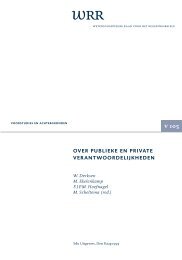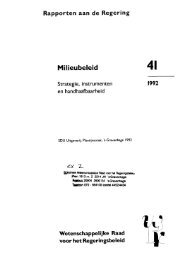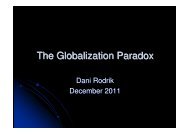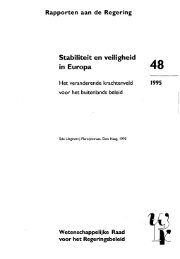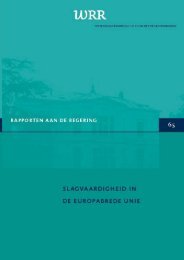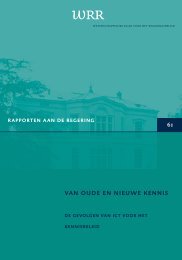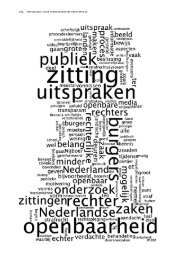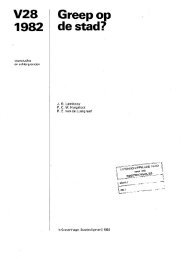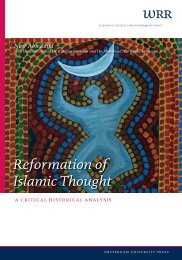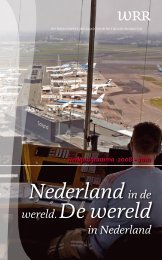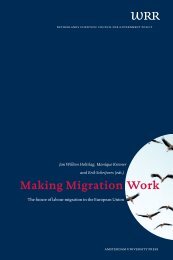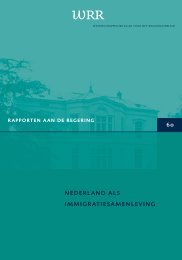w 109 long-run economic aspects of the european union's eastern ...
w 109 long-run economic aspects of the european union's eastern ...
w 109 long-run economic aspects of the european union's eastern ...
You also want an ePaper? Increase the reach of your titles
YUMPU automatically turns print PDFs into web optimized ePapers that Google loves.
LONG-RUN ECONOMIC ASPECTS OF THE EUROPEAN UNION’S EASTERN ENLARGEMENT78common trade policy implies (at minimum) a shift from a free trade area to acustoms union (without agriculture). It would bring <strong>the</strong> ‘partial-members’ to astatus already accomplished by Turkey. Even without agriculture, such a customsunion is GATT-compatible because it is explicitly meant to be completed withagriculture later on. But it would create enormous complications during a decadeor so. It is clear that partial membership is meant for a second tier <strong>of</strong> applicantcountries, which are behind in acquis adoption and enforcement and which haveproblems <strong>of</strong> transition, stabilisation and competitive performance. This <strong>the</strong>reforeimplies that an EU -20 or EU -21, would be subjected to complex agricultural transitionperiods, resulting in higher protection against <strong>the</strong> export from <strong>the</strong> ‘secondtier’countries to <strong>the</strong> ‘first-tier’ countries. In any event, <strong>the</strong> first tier will obtainaccess to <strong>the</strong> agricultural market <strong>of</strong> <strong>the</strong> EU -15, thus rendering it far more difficultfor <strong>the</strong> second tier to export to <strong>the</strong> EU -15. To prevent this, <strong>the</strong> EU-15 would have toextend <strong>the</strong> free trade areas with all <strong>the</strong> CEECs to agriculture, so that <strong>the</strong> second tieris not grossly disadvantaged. For industrial goods a customs union can <strong>the</strong>n beagreed. Yet a free trade area in agriculture, with <strong>the</strong> EU -15 (or perhaps <strong>the</strong> EU -20)applying <strong>the</strong> CAP, is nothing less than a nightmare scenario, due to its complexityand incentives for fraud. And all <strong>of</strong> this would apply for only a limited period <strong>of</strong>time, until graduation to full membership. More likely, <strong>the</strong>refore, <strong>the</strong> EU wouldra<strong>the</strong>r opt for compensations in terms <strong>of</strong> market access on a case by case basis, inanalogy to what Tunisia and Morocco obtained with <strong>the</strong> accession <strong>of</strong> Spain andPortugal. Such compensatory negotiations would in any event be inescapable oncea first group will enter <strong>the</strong> Union.Ano<strong>the</strong>r non-trivial issue related to <strong>the</strong> customs union for a group <strong>of</strong> 28 states is<strong>the</strong> establishment <strong>of</strong> a common competition policy. The Europe Agreements entaila commitment to introduce national competition policies (based on Articles 81, 82and 86, EC) as well as some kind <strong>of</strong> self-discipline in state aids. Merger control hasbeen introduced in Central Europe, although it is not in <strong>the</strong> Europe Agreements. Itwould require ei<strong>the</strong>r a treaty change or a kind <strong>of</strong> EEA arrangement for a commoncompetition policy to be possible.The institutional box in figure 4.1 suggests <strong>the</strong>re is access to <strong>the</strong> European Court <strong>of</strong>Justice (ECJ), presumably limited to <strong>the</strong> areas falling under <strong>the</strong> scope <strong>of</strong> partialmembership. The legal complications here are enormous. Probably <strong>the</strong> least complicatedsolution would be a special court (similar to that <strong>of</strong> <strong>the</strong> EEA) for relationswith <strong>the</strong> partial members, subject to a treaty, with full ratification procedures, yetwithout touching <strong>the</strong> institutional EU acquis itself. The SER proposal entails threenon-IM elements: decision-making, foreign and security policy and structural andcohesion policy. It is unclear what <strong>the</strong> participation in decision-making (Council,EP) exactly means; participation without votes (as sometimes occurs in EMUissues), full participation or something complex in-between? The political implications<strong>of</strong> <strong>the</strong>se variants differ ra<strong>the</strong>r drastically, both for Brussels/Strasbourg andfor <strong>the</strong> domestic politics <strong>of</strong> <strong>the</strong> partial members. This is important because itshould accentuate <strong>the</strong> difference between <strong>the</strong> EEA route and <strong>the</strong> membership route.



